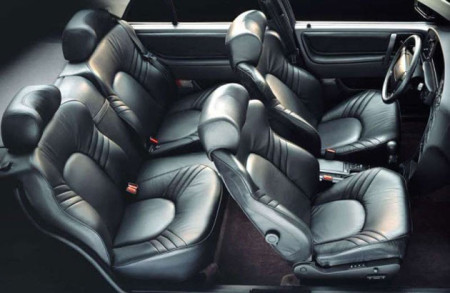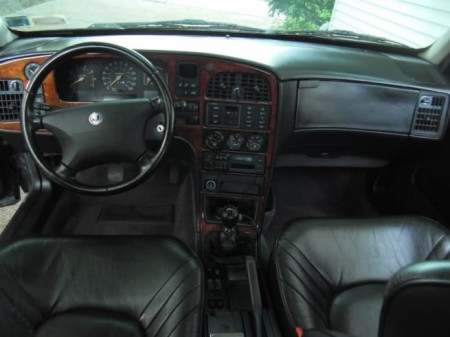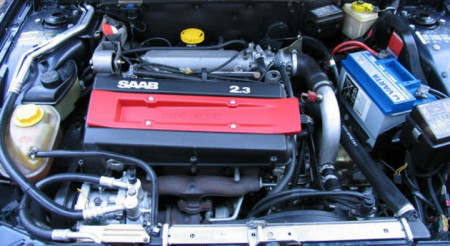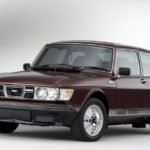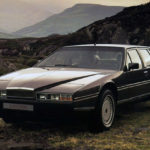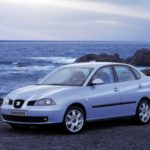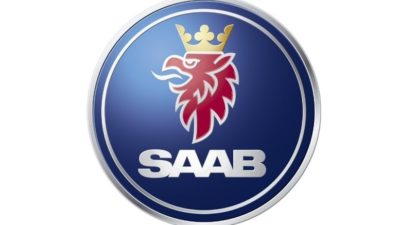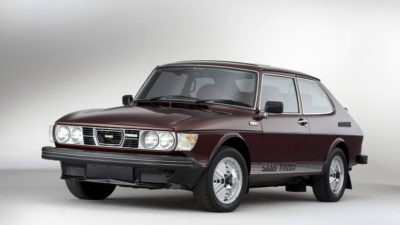SAAB 9000 Aero 1984 - 1998 - Model history
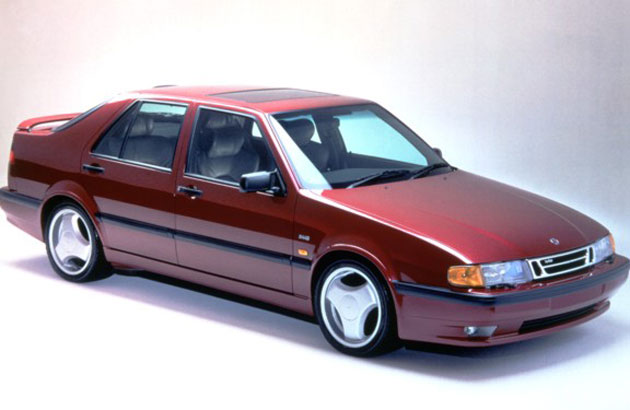
SAAB 9000 Aero
The Saab 9000 Aero is a car that, with its advent, became a dream for many drivers of the time and a car that set new standards when it hit the market in 1993. It's just a shame that the concept of the Saab 9000 Ecosport, the prototype introduced in 1992 and in fact the announcement of the Saab 9000 Aero, did not come to full effect, as the prototype had an engine of up to 255 "horses".
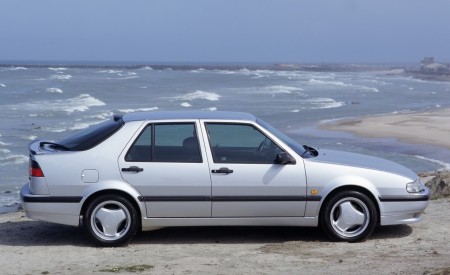
SAAB 9000 Aero
The Saab 9000 Aero brought something new to the premium segment, a dose of freshness, bold design and showed what Saab's view is of cars that should satisfy the passenger comfort segment while not lagging behind rivals in terms of performance and power. As the 9000 itself was extremely sporty, the Aero was a symbol of everything done so far on this model, with numerous improvements that made it what it is - exceptional. In order for this special version to have its own identity in terms of looks and to be different from its brothers, the Saab 9000 got a complete new aero package that includes sturdy sports bumpers, more aerodynamic skirts (site), and the rear end was adorned with a discreet spoiler that added greater thrust force.
Because the entire bodywork was extremely aerodynamic, these improvements helped further and reduced air resistance by some 10%. In terms of design on the Aero, the traditional design with the distinctive Saab hatchback style is highlighted, and the detail that emphasizes this is certainly the bulging single-sided rear windscreen that looks from the side to the famous van models of the 900 and 99. This was done with the intention of not losing the identity of the so-called coupe-van bodies, which have been Saab's trademark throughout history. In addition to its originality, the rear windshield also played an aerodynamic role, as it is extremely fluidly designed and improves airflow and thus affects performance and fuel consumption. The aspiration for the Saab 9000 Aero's air resistance was just 0.32 cd. We will agree that this is an impressive result for one car from the premium segment.
The detail that rounded out the appearance of the Aero is the special three-spoke 16-inch aluminum Aero wheels that are still very popular today for Saab fans. Certainly, the appearance of the 9000 Aero is mesmerizing, with the real gem hiding under the hood. As it was common for sports cars in the premium segment to find a regular six-cylinder or V6 under the hood, the Saab 9000 Aero performed in a different edition. Under the hood of the 9000 Aero was the famous regular four-cylinder turbocharged engine of the B234R factory. With a bigger one Mitsubishi TDH04 Turbo charger, this engine was pulling out of 2,3hp from just 225 liters, which was more than a big figure during that time. This engine came with a new and improved ignition system called Trionic 5 and is recognized by the red DI (Direct Ignition) cassette on the cylinder head. Another outstanding step forward is the counter-rotating shafts with weights that reduce engine vibration and noise, bringing comfort to a higher level.
Certainly, one of the more sophisticated systems at the time, and still today, is Saab's ingenious APC (Automatic Performance Control) system, which improved engine performance while extending life expectancy, and it should also be said that none of the other manufacturers had anything like that at the time. Why the APC system is the ingenious invention of Saab engineers is best said that the system recognizes the quality of the combusted fuel, and if it is of lower quality, the system immediately reduces the pressure of the turbine and vice versa, if the fuel is of good quality the turbine works at maximum and simply "sings", and The APC is also responsible for monitoring all other parameters related to the engine's performance and performance, so that the tuning and power-ups usually change the parameters in this system. The engine is of DOHC construction, that is, with two camshafts located in the cylinder head with an arrangement of 4 valves per cylinder (16v), and the camshafts are driven by a chain. It is also interesting that the SAAB 9000 Aero had a turbocharger pressure set to 1,05 bar (15 psi), which was still a lot of pressure for use in passenger cars at the time.
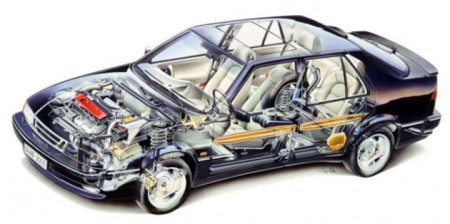
SAAB 9000 Aero
All this guaranteed the inferior performance of the 9000 Aero. The power of this turbo engine has traditionally been transmitted via the five-speed manual transmission to the front axle, while with a 4-speed automatic transmission the power has been reduced to 200 "horses" because the transmission could not withstand.
The manual was very well measured and the gears were sliding smoothly from one to the other. This gearbox deserves great praise because it was tasked with transmitting the huge 350Nm of torque that made the SAAB 9000 Aero have brutal interfaces in the true sense of the word. This is best demonstrated by the fact that for 80 to 120 km / h, the Aero arrives in a shorter time than the Lamborghini Diablo and Ferrari Testarossa, which you will admit, for a premium car class, a result for pride.
The only thing that kept you from starting abruptly was the sliding of the front wheels. the power "spilled out". To reduce this, a TCS, or Traction Control, system was introduced. It came as standard in the early years and couldn't be left out, and later, when it was determined that the performance was malfunctioning, it was possible to buy an Aero without traction control, or it could simply be shut down. Still, that slip did not stop it from enjoying the fast ride, with acceleration up to 100 km / h in just 6,7 seconds, making the SAAB 9000 Aero a car with a very convincing sporting performance of the time. The forces that bring in greater amounts of power and torque during sporting driving suffer most from the car's lower body, ie. his suspension. To make the ride in this special model unforgettable, the suspension has been revised and further strengthened in sensitive areas for the needs of a stronger engine. The front suspension received reinforced "A" shoulders, sportier, stiffer springs and shock absorbers, more robust horizontal stabilizers ready to withstand more force, while the rear suspension also received stiffer springs and horizontal load-bearing stabilizers. With these enhancements, the clearance was reduced by 8 mm in front and 5 mm in the back, giving Aero a confident attitude and an even more beautiful appearance with a sport pedigree. The move, in fact, did not lose any comfort at all, but you got a car that can "fly" the highway with a great dose of comfort, and on the weekends to print circles on the Nuremburg without any problems. The brakes were in charge of extremely efficient brakes. The front ones were ventilated and the rear ones were classic disc brakes. Just as everything has been done so far with the Aero with great care and at the highest possible level in terms of engine, appearance, suspension, this commitment treatment has not bypassed the interior, let alone the safety.
Specifications for SAAB 9000 Aero (1993):
Engine:
B234R inline 2,3 l (2.290 cm³) turbocharged engine, larger Mitsubishi TD04HL-15G-6 turbocharger, Trionic 5-red DI cassette (Direct Ignition), APC fuel quality control and engine parameters, fuel injection in multi-point injection, DOHC-2 camshafts with 4 valves per cylinder (16v), camshaft drive through the chain, cylinder diameter / piston stroke (90 mm / 90 mm), compression 9.3: 1, block of steel motor, aluminum head, front mounted in transverse position.
Transmission:
A five-speed manual transmission that traditionally transfers power and torque to the front axle
Suspension:
Forward MacPherson scheme with reinforced "A" shoulders to withstand suspension with greater force, sports springs and shock absorbers with larger and more rigid horizontal stabilizers, rear suspension also further tightened with tighter horizontal stabilizers, forward clearance lower by 8 mm and rear by 5 mm / brakes with ventilating disks forward while the rear disc brakes are standard with the ABS system
Dimensions:
(L / W / H): 4761 mm / 1788 mm / 1415 mm, wheelbase 2672mm / weight: 1440kg;
Power:
225 hp at 5.500 rpm / 350 Nm of torque at 1.800 rpm; specific power is 98 HP per liter of volume
Performance:
0-100km / h in 6,7 s while top speed is 240 km / h (149 mp / h), 1/4 mile in 14,8 s
The interior was captivated by luxury and a touch of sporty atmosphere. There are also specially designed Recaro leather tubs with a very pronounced lateral support that are designed to hug the body tightly in curves. In addition, these seats were more comfortable than any home armchair, with the option of heating and electric position adjustment. All controls on the center console are clearly and logically distributed, and the ergonomics are at a high level. There was also a SID (Saab information display) program that displayed all the important parameters and driving information on the screen, some of which were outside temperature, battery voltage at engine start, average fuel consumption, fuel mileage, yarn with the remaining amount of fuel as well as many other information.
The only thing that catches your eye for Saab fans is that the engine start lock is in a classic place at the steering wheel, not traditionally on the tunnel next to the transmission. This is of course due to the use of Fiat's Tipo 4 platform, and after all, it's the only thing in common and similarity it has with the cars it shares the platform with. The Aero also had air conditioning, an audio system, power windows, a central lock, and other little things, and in 1995, the dose of luxury was augmented by the insertion of a premium wood panel and a high-quality 10-speaker Harman Kardon audio system. All this made the SAAB 9000 Aero the status of a luxury, sporty car that offered ample interior space and cruiser comfort, while airbags and an extremely sturdy chassis took care of safety. Also, the Saab 9000 Aero had additional reinforcements in the door that made it even safer, and on one occasion was declared the safest car in Sweden.
In terms of competition, the Saab 9000 Aero was a fierce competitor to the Mercedes w124 E320 and BMW 5 530 (e34), although it was able to respond sharply to the smaller engine and the smaller cylinders, and no one in the segment could approach it for elasticity. . Regarding criticism that texts about Saab cars are not based on facts and the like, here I will quote some sentences that were drawn as a conclusion by a number of test drivers from auto magazines who were delighted with the appearance and performance of the Saab 9000 Aero.
Here is one conclusion from the famous European Car Magazine, impressed after the ride by Greg Brown, which reads:
“The 9000 Aero is flatly the finest road vehicle I have ever driven, especially when driving at speeds most drivers only dream about. This car has high-speed road capability well above 95% or all other cars on any back road, but no matter what wheels you are up against. The 9000 Aero is one very fast, safe car. "
This sentence is so beautifully woven that every addition to it is superfluous, and in a true sense, indicates what a Saab 9000 Aero is. I will also add one personal experience that helped me understand what the Saab 9000 is all about.
Namely, at a gathering of fans of this brand called SAAB CLUB SERBIA I had the opportunity to ride in a Saab 9000 CS with a B234 engine under the hood and 230 hp (400 Nm). Impressions from that ride are still collected today because it is indescribable in words. The Saab 9000 Aero is probably not the best car in the world, but what I can say and claim is that this car always comes out with a smiling face after driving, and that is what every Saab in this world actually creates, the desire to drive and enjoy. to her.
The production of this legend Saab The 9000 Aero came to an end in 1997, and for those four years of existence, Aero has made a grand and glorious history for itself in the world of cars that will last forever, and in the heritage of Saab will be remembered as the most powerful Saab ever produced and as the first representative of the noble Trolhatan brand in the premium car segment.
He was especially loved on the American continent where about 3.850 Aero models ended up. In conclusion, the SAAB 9000 Aero can be said to provide passengers with comfort and space as a living room, safety and security as a tank, leaving performance in all respects breathless, so as such it remained special and probably the only one because a car like this will ever be produced, a car for enthusiasts who deserves love, and if not love, then it certainly deserves the respect of car lovers.
Writes: SAAB CLUB SERBIA - saabclubserbia.rs
Retrieved from: www.vrelegume.rs
Recommendation of similar texts:

Hi there, I am Mladen and I am an auto enthusiast. I started this blog years ago to help like minded people share information about latest cars, car servicing ideas, used car info, exotic cars, and auto technology. You will find helpful articles and videos on a wide variety of cars - Audi, Mercedes, Toyota, Porsche, Volvo, BMW and much more. Ping us if you have anything cool to share on latest cars or on how to make older cars more efficient, or just want to say hi!

